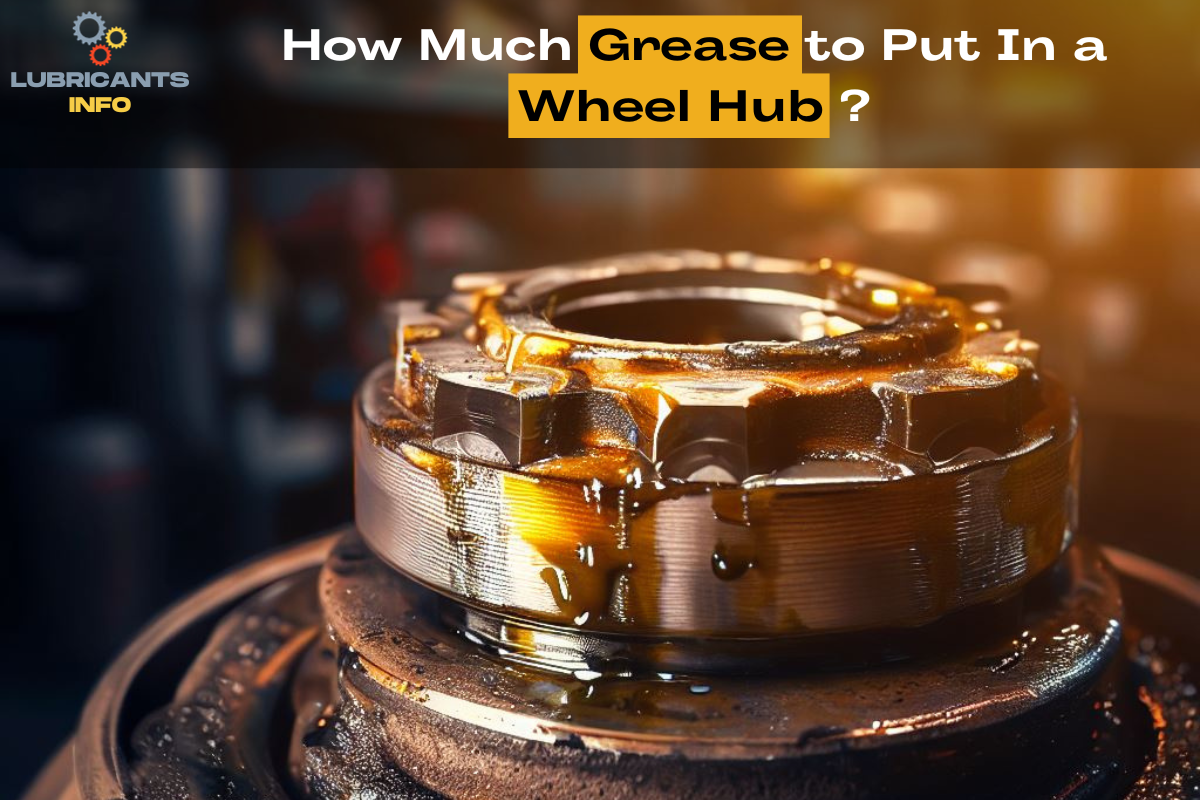Greasing wheel bearings is an important part of vehicle maintenance. Here is a summary of the key information in this blog post:
| Recommended Amount of Grease | 1/3 to 1/2 full |
| Grease Type | High temp wheel bearing grease |
| How Often to Re-pack | Every 30,000-100,000 miles |
| Signs of Low Grease | Noise, looseness, overheating |
| Tools Needed | Grease gun, rubber mallet, screwdriver, rags |
Properly lubricating the bearings can prevent premature wear, extend the life of the component, and save you money on repairs down the road. This article will cover how much grease you need to repack your bearings, what type to use, service intervals, and signs that the grease level is getting low. With a few basic tools and following straightforward steps, you can easily repack the wheel bearings on your car, truck or trailer yourself.
How Much Grease to Use When Packing Wheel Bearings
The most important factor is using the right amount of grease when servicing wheel bearings. The general recommendation from mechanics is to fill the inside bearing cavity about 1/3 to 1/2 full. This leaves adequate room inside for the grease to spread evenly as the wheel and hub are rotating at high speeds.
Overfilling the packed bearings with too much grease can cause excess heat buildup and resistance when turning. Underfilling with too little grease will lead to insufficient lubrication, friction, and wear over time. Shooting for the 1/3 to 1/2 full benchmark will provide full lubrication without the downsides of overpacking.
Select High Quality Wheel Bearing Grease
It’s critical to use a high temperature, high pressure grease designed specifically for the demands of wheel hub applications. The thick consistency and adhesive properties keep the grease in place even at high RPMs.
Regular chassis grease and multi-purpose lubricants are too thin for effective wheel bearing lubrication. The grease will simply splatter out from centrifugal forces. Using the proper NLGI #2 rated grease made for wheel bearings leads to longer component life, smoother rolling, and less friction-induced heat.
Service Intervals – How Often to Re-pack Wheel Bearings
The frequency of needing to re-grease wheel bearings depends primarily on these factors:
- Mileage – For normal passenger vehicles, every 30,000-50,000 miles is typical. Higher mileage cars may need it more often.
- Driving Conditions – Frequent stop-and-go traffic, harsh weather, off-roading, and hauling heavy loads will necessitate more frequent bearing service.
- Vehicle Type – Larger trucks, RVs and trailers usually require bearing maintenance every 10,000-20,000 miles.
Refer to your owner’s manual for the recommended service intervals. When in doubt, it’s better to re-grease sooner rather than later to avoid damage from insufficient lubrication.
Signs It’s Time to Re-pack The Wheel Bearings
Don’t rely solely on miles driven to determine when your bearings need fresh grease. Be on the lookout for these warning signs:
- Grinding, squealing or rumbling noises when the wheel turns
- Excessive wheel play or loose feeling steering
- Burning smell from overheated hub assembly
Any of these symptoms indicate the bearings should be re-packed immediately, regardless of mileage. Catching low lube issues early prevents extensive repairs.
DIY Wheel Bearing Packing – Step-by-Step
With a few standard automotive tools, you can easily handle this routine maintenance task yourself:
- Grease gun – Apply the fresh grease into the cleaned bearing cavities.
- Rubber mallet – For gently tapping the bearing seal into place without damage.
- Large screwdriver – To pry off hubcaps and bearing caps.
- Rags – For wiping away old contaminated grease.
- Mechanic’s gloves – Keep hands clean during messy job.
General Process:
- Remove wheel and disassemble hub/rotor assembly.
- Thoroughly clean all old grease and debris from bearing cavities.
- Carefully inspect components for wear or damage. Replace as needed.
- Pack fresh grease into bearing rollers and cavities about 1/3 to 1/2 full.
- Reassemble hub and install new seal. Adjust to proper torque specs.
- Repeat process for all wheels, checking your vehicle’s owner’s manual for proper disassembly and assembly instructions specific to your make/model.
Properly packing wheel bearings with new grease every 30,000-50,000 miles will keep the components lubricated and prevent premature wear. Listen for noise and feel for play in the wheels as telltale signs it’s time to re-grease. With a basic toolkit and following standard procedures, you can handle this regular maintenance yourself and save on shop repair bills. Keep your vehicle safely rolling for hundreds of thousands of miles down the road with properly lubricated wheel bearings.
FAQ – Common Wheel Bearing Re-greasing Questions
Still have questions about packing wheel bearings? Here are answers to some frequently asked questions:
How often should I rotate my tires when I repack the wheel bearings?
Anytime the wheels are removed for bearing service is smart to rotate the tires as well for even wear. Just remember to torque the lug nuts back to spec after rotating.
What’s the best way to clean old bearing grease before repacking?
Thoroughly clean with solvent/degreaser and rinse out the cavities with fresh brake cleaner. Remove all old contaminated grease and dust buildup for smooth, quiet operation.
Can I simply add grease without fully disassembling the hub assembly?
It’s highly recommended to fully remove the bearing assemblies for proper cleaning and inspection. Adding grease without disassembly will not fully purge contaminated buildup.
Do I need an expensive specialty grease gun to pack bearings?
An inexpensive standard grease gun from an auto parts store is perfect for DIY bearing packing. No need for expensive specialized tools.
How tight should I torque the axle nut when finished?
Torque the axle nut to your vehicle’s factory specs, usually around 100-200 ft-lbs. Overtightening can cause bearing damage. Confirm proper torque with a calibrated inch-pound wrench.

